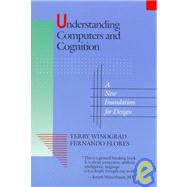
What is included with this book?
| Preface | p. xi |
| Acknowledgments | p. xiii |
| Theoretical Background | |
| Introduction | p. 3 |
| The question of design | p. 4 |
| The role of tradition | p. 7 |
| Our path | p. 8 |
| The rationalistic tradition | p. 14 |
| The rationalistic orientation | p. 14 |
| Language, truth, and the world | p. 17 |
| Decision making and problem solving | p. 20 |
| Cognitive science | p. 23 |
| Understanding and Being | p. 27 |
| Hermeneutics | p. 27 |
| Understanding and ontology | p. 30 |
| An illustration of thrownness | p. 33 |
| Breaking down and readiness-to-hand | p. 36 |
| Cognition as a biological phenomenon | p. 38 |
| The closure of the nervous system | p. 41 |
| Autopoiesis, evolution, and learning | p. 44 |
| The cognitive domain | p. 46 |
| Consensual domains | p. 48 |
| The observer and description | p. 50 |
| Domains of explanation | p. 52 |
| Language, listening, and commitment | p. 54 |
| Listening in a background | p. 54 |
| Meaning, commitment, and speech acts | p. 58 |
| Objectivity and tradition | p. 60 |
| Recurrence and formalization | p. 64 |
| Breakdown, language, and existence | p. 68 |
| Towards a new orientation | p. 70 |
| Cognition and being in the world | p. 70 |
| Knowledge and representation | p. 72 |
| Pre-understanding and background | p. 74 |
| Language and action | p. 76 |
| Breakdown and the ontology of design | p. 77 |
| Computation, Thought, and Language | |
| Computers and representation | p. 83 |
| Programming as representation | p. 84 |
| Levels of representation | p. 86 |
| Can computers do more than you tell them to do? | p. 90 |
| Computation and intelligence | p. 93 |
| Why do we ask? | p. 93 |
| Intelligence as rational problem solving | p. 95 |
| The phenomenon of blindness | p. 97 |
| What about learning and evolution? | p. 100 |
| Can pigs have wings? | p. 104 |
| Understanding language | p. 107 |
| Artificial intelligence and language understanding | p. 107 |
| The problem of background | p. 111 |
| Understanding as pattern recognition | p. 115 |
| What does it mean to understand? | p. 119 |
| Current directions in artificial intelligence | p. 125 |
| The forking of the paths | p. 126 |
| Expert systems | p. 131 |
| The fifth generation computer system | p. 133 |
| Design | |
| Management and conversation | p. 143 |
| Management and decision making | p. 144 |
| Decision making and resolution | p. 147 |
| Organizations as networks of commitments | p. 150 |
| Decision support systems | p. 152 |
| Tools for conversation | p. 157 |
| Using computers: A direction for design | p. 163 |
| A background for computer design | p. 164 |
| A design example | p. 167 |
| Systematic domains | p. 174 |
| Technology and transformation | p. 177 |
| Bibliography | p. 181 |
| Name Index | p. 191 |
| Subject Index | p. 194 |
| Table of Contents provided by Ingram. All Rights Reserved. |
The New copy of this book will include any supplemental materials advertised. Please check the title of the book to determine if it should include any access cards, study guides, lab manuals, CDs, etc.
The Used, Rental and eBook copies of this book are not guaranteed to include any supplemental materials. Typically, only the book itself is included. This is true even if the title states it includes any access cards, study guides, lab manuals, CDs, etc.